
CLASS AVES
 |
|||||||
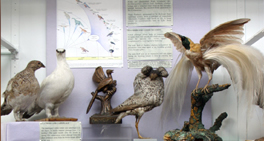 |
|||||||
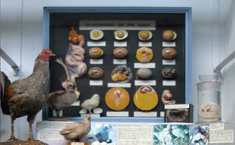 |
|||||||
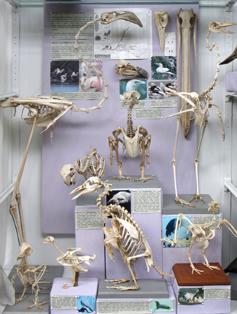 |
|||||||
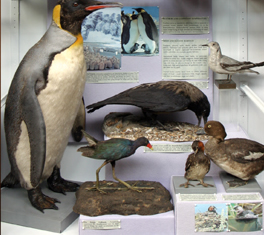 |
|||||||
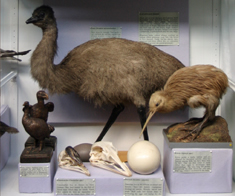 |
|||||||
Birds have beaks and are covered in feathers. They use their forelimbs as wings for flying. Their hind limbs are modified for walking, perching or swimming. They lay eggs with hard impermeable shells. In spite of a long evolutionary history, birds remain a uniform group, whose body form has been limited by the physical requirements of flight. Flight enables birds to travel and migrate long distances over land and sea and to build nests for their eggs and young in trees, cliffs and isolated places. Flight led to sight becoming their major sense. The 8805 species of modern birds are assigned to 28 orders, 163 families and 1975 genera. 5206 of the 8505 species of birds alive today belong to only one order – the Order Passeriformes.
Specimens of stuffed birds and bird skulls and skeletons from all over the world have been arranged in three cases in the Gallery to illustrate the major features of the Class Aves. Most of our British birds are arranged in a separate series of cases.
| EXTERNAL FEATURES | SKELETIONS & SKULLS | ORIGINS & FEATHERS | AQUATIC HABITATS | BREEDING STRATEGIES | FLIGHTLESS BIRDS |






